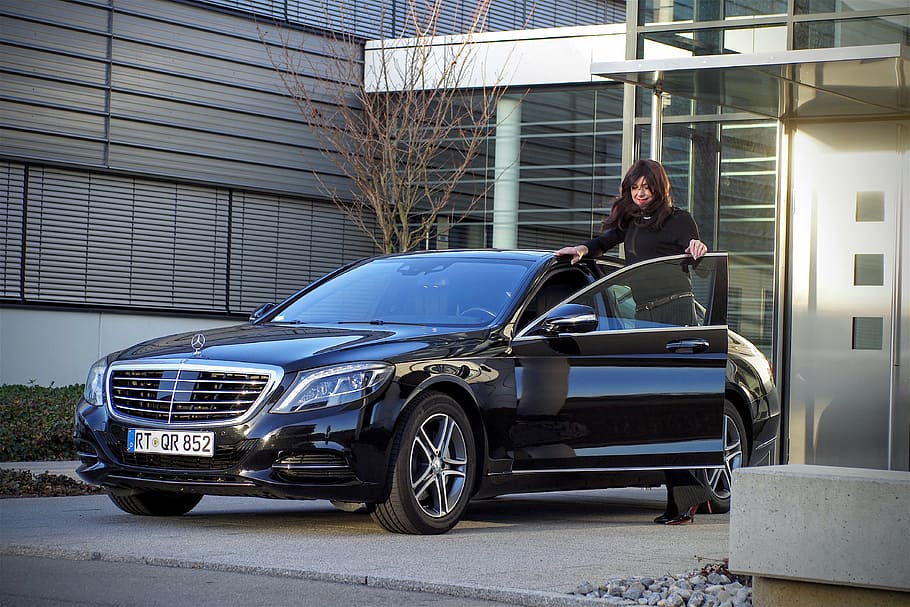The Other Side
Of Luxury Living
by Dani Stone
I know several people who drive luxury cars, live in swank condos or homes, and have little or no money on hand for day-to-day needs. In fact, many are “living” a luxury lifestyle, but usually go to friends or family when an emergency or an urgent need for money arises.
One friend has maxed out all her credit cards at high-end stores, which sell the popular labels that enable her to sport an expensive look, but she has no real cash to speak of. Her checking account is always low, and she has no savings account. However, you would never guess that if you saw her.
She has a Chanel suit for every day of the week, (with shoes to match) and she doesn’t leave home without one of her $4000.00 Cartier purses. She drives an S-Class Benz, but can rarely get $100.00 out of the ATM at one time because all of her salary goes toward maintaining her lifestyle and her image requirements.
Frankly, this way of living is not foreign to me, because for not too long, I was very much ensconced in this lifestyle. I was driving a new Lexus, and I couldn’t afford to fill it up with gas. I would go out to dinner with friends who I couldn’t afford to eat with. They were stuck on dining at restaurants, which specialized in high-priced menus. But I’d go anyway to keep up the front and be in the mix.
On more than one occasion, I almost fainted in embarrassment, when the waiter would come back to the table with my credit card in hand and proclaim loudly that it had been declined.

When I wasn’t in “love” or dating, shopping became what I termed, “my joystick,” and my obsession. I earned a good salary, yet I borrowed money to pay my bills, while I wasted money buying pretty things that I sometimes didn’t use or wear because it made me feel good.
One day, it hit me hard, while I was standing outside my job with the rain pouring down in torrents. I realized I was standing there in a very expensive Dana Buchman suit, waiting for the rain to stop, so I could walk to the train because I didn’t have $10.00 to catch a cab to the station. I had a conversation earlier that day with a friend, who was in awe that I didn’t have $100.00 to purchase a ticket to an event that I really wanted to attend. Her words rang in my ears, as the rain splashed against my face. “Girl, you mean, as expensive as you look, you don’t have no money? Sounds like you’re doing something you need to change.”
She was right, and from that day forward, I made a decision to totally revamp my spending habits. I am now more financially solvent than I’ve ever been, and I have a savings account that has substantial cash in it. I also traded my designer fetish for more practical buys. I still look good, but I have more money in my pocket, and most importantly, I am no longer a “payday borrower.”
After doing much research, I discovered that I was, unfortunately, among the thousands who were living extravagant lifestyles with no savings anywhere. For me, and many others, the image was more important than substance.
In this world of high spending and overextended bank cards, surveys show that many middle and upper-income singles are broke three days after payday. Studies show that only one out of seven people handle the money they earn in a responsible manner.
Studies show the average woman who earns $70,000 a year would likely have to borrow money if she had an emergency.
What about you? Are you a smart spender and able to afford to do basically what you want to do, when you want to do it? Here are 10 signs of a smart spender.
- They always have at least $100.00 cash on hand available for emergencies.
- They fill their cars up with gas once a week.
- Their credit card debt does not exceed $2500.00 and the interest is not over 5%. Special Note: The American Express Card does not have interest rates on balances. Typically, it can be paid off in 30 days.
- They have at least $1000.00 in a savings account.
- For them, shopping is not a hobby. It’s a necessity.
- They buy as much as possible at a discounted price.
- They save at least 10% of their income every month. (Example: If you earn $64,000 per year, you should save at least $6400.00 per year)
- They have only one credit car
- They seldom suffer from “regret spending.” They think before they buy.
- They seldom buy retail.





